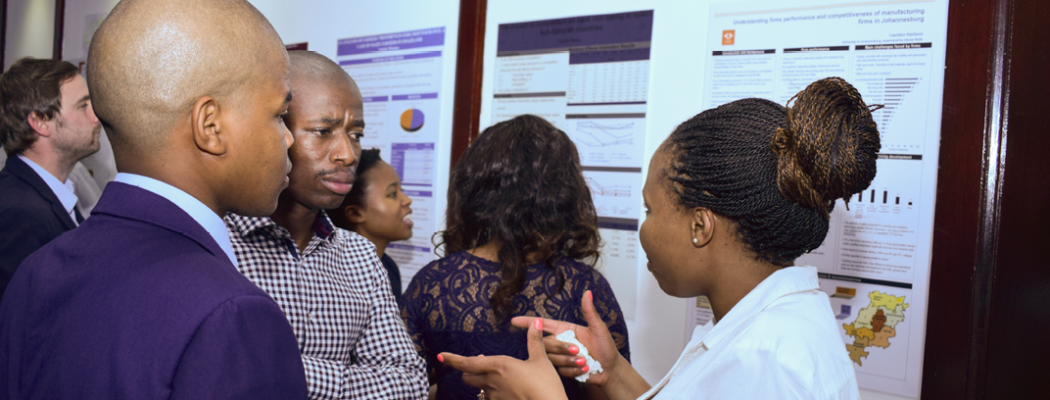Balancing tax collection and equality — the case of value-added tax in South Africa
In a democratic system, taxation is a critical part of the social contract between the state and its citizens. The tax system can be used to help address the unacceptably high levels of poverty, inequality, and unemployment in South Africa.
An increase in VAT from 14% to 15% caused a modest rise in overall poverty and inequality
This was mostly reversed by a subsequent increase in social grant expenditures
However, the poorest 10% of South Africans were the worst affected by the VAT increase, with post-fiscal income falling by more than 6% per annum as a direct result
The subsequent reforms failed to target much of this group, and so they did not wholly redress the negative impact of the VAT increase
Value-added tax (VAT), which is a tax added to the purchase price of goods and services, has received widespread attention in South Africa due to the recent decision to increase the standard rate of VAT from 14% to 15% with effect from 1 April 2018. Although the change to 15% brings South Africa in line with some of its neighbours (Namibia and Zimbabwe) and is lower than Mozambique’s standard rate of 17%, there has been concern that people with low-incomes would suffer disproportionately because of the change.
In order to help mitigate the effect of the tax increase on poorer households there was an above-inflation increase in existing social grants, which are direct government income transfers to qualifying South Africans. Later, the list of consumption items that are VAT zero-rated was also expanded. However, since people with higher incomes tend to consume more in absolute terms, they benefit more from zero-rating than do people with lower incomes.
Using SAMOD, a South African tax-benefit microsimulation model, we can examine the distributional impact of the VAT increase and explore the impact of actual or hypothetical policy reforms that could mitigate this impact on the poorest households. By testing different tax-benefit scenarios we can compare options for redressing the negative impacts of the tax increase.
The distributional impact of increased VAT
The increase in VAT from 14% to 15% caused a slight rise in poverty and inequality overall, but that was reversed by the subsequent increases in benefit amounts which took effect in October 2018. However, the effect of the increase in VAT was distributed unequally across the population with the people worst affected being those in the poorest post-fiscal income decile. For this group, post-fiscal income — that is, per capita household income after accounting for taxes, including VAT, and grants — fell by more than 6% as a result of the tax increase. The increase in benefit amounts that took place in October 2018 did not wholly offset this negative impact because not all households in the poorest 10% qualify to receive benefits.
The impact of alternative reforms
Building on these findings, a number of hypothetical reform scenarios were explored to identify options that might achieve redress for the poorest households. In order to generate revenue for the redress, the zero-rating of VAT was abolished and the revenue generated by doing so (just under R20 billion) was ploughed back into the benefit system.
Options were explored for new means-tested benefits (programmes that require participants to meet certain qualification criteria) for which young people and older people of working age might qualify. Some of the hypothetical schemes used the same means test as is used for South Africa’s child support grant, for which 80% of all children in South Africa are eligible.
The overall cost and impacts on poverty and inequality of new social grants, targeting either young people (18-25 years) or older people (26-59 years) of working age, are similar. However, with reference to the poorest 10%, the impact of the reform aimed at older people of working age is much greater — increasing the post-fiscal income of the first decile by around 30% — than the impact of the reform aimed at younger people which increases post-fiscal income for the poorest decile by around 16% only. This is despite the benefit for those aged 18–25 years being paid at almost twice the value of the benefit for those aged 26–59 years.
Two further strands of analysis were pursued. First, two universal benefits were tested and it was demonstrated that these would have a greater poverty-reducing effect overall than means-tested benefits, although at a greater cost. Second, a scenario was tested whereby the VAT hike was simply reversed, zero-rating was eliminated, and the revenue generated was applied to an existing benefit (the child support grant). Though this also reduced poverty overall, it did not improve post-fiscal income for the poorest 10%.
Policy messages
A policy package including both a uniform VAT rate (with no zero-rating) and an expanded set of social benefits would lead to greater reductions in poverty and inequality than the current practice of zero-rating certain items
For low-income households, the negative impact of the VAT increases, including any increase associated with eliminating zero-rating, could be reversed by a new benefit aimed at those who currently fall outside the benefit system, particularly a social grant for low-income working-age South Africans
The elimination of the zero-rating of VAT would provide enough revenue to fund such a benefit
The above analysis supports the widely-held concern that the VAT hike disproportionately and negatively affected the poorest households. This is commonly found to be true at the global level for taxes on consumption. Second, it provides a positive message about the impact of the October 2018 benefit hike, overall, as the total impact of the benefit increase on poverty cancelled out the total impact of the VAT hike. However, these impacts were not distributed equally across the bottom half of households, so that the poorest households continue to be negatively affected.
Tax-benefit microsimulation provides an opportunity to test out the first-order effects of an almost infinite number of reform scenarios to explore options for redress. In these tests, new benefits aimed at those who currently fall outside the benefit system most effectively reverse the negative impact of the VAT hike.
This was found to be particularly true of a benefit for low-income South Africans aged 26-59 years. Furthermore, ending the policy of VAT zero-rating could fund such a benefit. The elimination of VAT zero-rating would provide R20 billion in the most recent tax year, which is sufficient revenue to provide redress for the poorest households through the benefits system.






